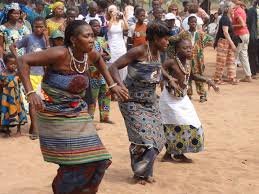Ghana, a country renowned for its vibrant culture and economic potential, boasts a rich historical narrative that continues to captivate scholars and travelers alike. Among the treasures of Ghana’s past are the stories of the Volta Empires, which offer a fascinating glimpse into the region’s ancient civilizations, cultural evolution, and historical milestones. This blog delves into the history of these empires and other significant periods, painting a vivid picture of their enduring legacy.
The Origins of the Volta Empires
The Volta region, nestled in eastern Ghana, is named after the Volta River, a lifeline for the communities that have thrived along its banks. The history of the Volta Empires can be traced back to the rise of powerful states that flourished due to their strategic location, natural resources, and cultural cohesion. These empires played pivotal roles in shaping trade routes, influencing regional politics, and fostering cultural exchanges.
The Ewe People: Pillars of the Volta Empires
Central to the history of the Volta Empires are the Ewe people, who migrated from Notsie in present-day Togo. This migration, steeped in oral traditions, highlights the resilience and ingenuity of the Ewe as they established settlements and formed communities. Their social structure, which included chiefs, priests, and warriors, ensured effective governance and the preservation of their customs.
The Ewe’s craftsmanship, particularly in weaving kente cloth, stands as a testament to their artistic and cultural prowess. Today, these traditions continue to thrive, offering a tangible connection to their historical roots.
The Role of Trade in the Volta Empires
Trade was a cornerstone of the Volta Empires, with the region serving as a hub for exchanging goods such as salt, gold, and ivory. The empires’ proximity to the Volta River facilitated commerce, allowing them to connect with other West African states and coastal traders. This interaction not only boosted their economies but also enriched their cultures through the exchange of ideas and innovations.
Challenges and Decline
Like many ancient empires, the Volta Empires faced challenges that led to their eventual decline. Internal conflicts, external invasions, and shifts in trade dynamics weakened their structures. Despite these setbacks, the legacies of these empires endure, evident in the traditions, languages, and festivals celebrated in the Volta region today.
The Modern Significance of the Volta Region
The Volta Region remains a treasure trove of history and culture, attracting visitors eager to explore its past and present. From the serene Lake Volta to the majestic Wli Waterfalls, the region offers a blend of natural beauty and historical intrigue.
For those planning a visit, HospitalityGH provides valuable insights and resources to make your trip unforgettable. The platform offers recommendations for accommodations, travel tips, and cultural highlights, ensuring a comprehensive experience.
Connecting the Past to the Present
Ghana’s history is not confined to textbooks; it lives on through the people, traditions, and landscapes of regions like Volta. Exploring the Volta Empires not only deepens our understanding of the past but also underscores the resilience and creativity that continue to define the region. To learn more about the fascinating histories of West Africa, platforms like World History Encyclopedia and UNESCO offer extensive resources for curious minds.
In conclusion, the Volta Empires are more than historical footnotes; they are integral chapters in the story of Ghana and West Africa. By delving into their history, we uncover lessons of unity, innovation, and cultural richness that resonate across generations. Whether you are a history enthusiast or a traveler seeking unique experiences, the Volta region promises a journey into the heart of Ghana’s enduring legacy.
